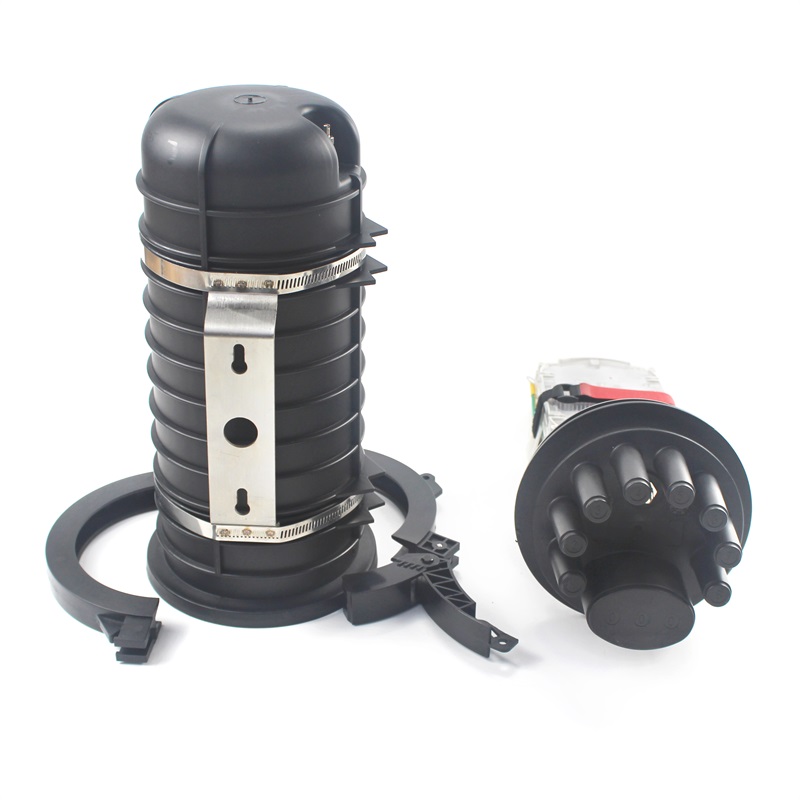Glasvezelsplitsingsôfsluting is in kritysk ûnderdiel yn telekommunikaasjenetwurken, en fasilitearret de ferbining en beskerming fan glêstriedkabels. Dizze ôfslutingen spylje in krúsjale rol by it garandearjen fan naadleaze gegevensoerdracht troch in feilige omjouwing te bieden foar it splitsen en opslaan fan optyske fezels.
Ien fan 'e wichtichste foardielen fan glêstried-splitsingsslutingen is har fermogen om optyske fezels te beskermjen tsjin miljeufaktoaren lykas focht, stof en ekstreme temperatueren. Troch in fersegele omsluting te meitsjen, foarkomme dizze slutingen sinjaaldegradaasje en behâlde se de yntegriteit fan 'e netwurkferbining.
Fierder meitsje glêstriedferbiningen effisjint glêstriedbehear en -organisaasje mooglik binnen in netwurkynfrastruktuer. Mei ferskate maten en konfiguraasjes beskikber, kinne dizze ferbiningen ferskillende oantallen glêstriedstringen ûnderbringe, wêrtroch't se alsidich binne foar in breed skala oan netwurktapassingen.
Neist it beskermjen en organisearjen fan optyske fezels ferienfâldigje splitsingsslutingen ek it ûnderhâld en de reparaasjes fan it netwurk. Troch maklike tagong ta de glêstriedsplitsingspunten mooglik te meitsjen, kinne technici alle problemen dy't ûntsteane fluch identifisearje en oanpakke, wêrtroch't downtime minimalisearre wurdt en ûnûnderbrutsen ferbining garandearre wurdt.
Oer it algemien binne glêstriedferbinings ûnmisber foar it garandearjen fan betroubere en hege prestaasjes netwurkferbining. Harren fermogen om optyske fezels te beskermjen, te organisearjen en it ûnderhâld dêrfan te fasilitearjen makket se essensjele ûnderdielen yn moderne telekommunikaasje-ynfrastruktuer.
Konklúzjend is de ymplemintaasje fan glêstriedferbiningen krúsjaal foar it behâld fan 'e effisjinsje en betrouberens fan glêstriednetwurken. Mei de fierdere foarútgong fan 'e technology sil de fraach nei naadleaze ferbining allinich mar tanimme, wat it belang fan dizze essensjele netwurkkomponinten fierder ûnderstreket.
Pleatsingstiid: 3 juny 2024

